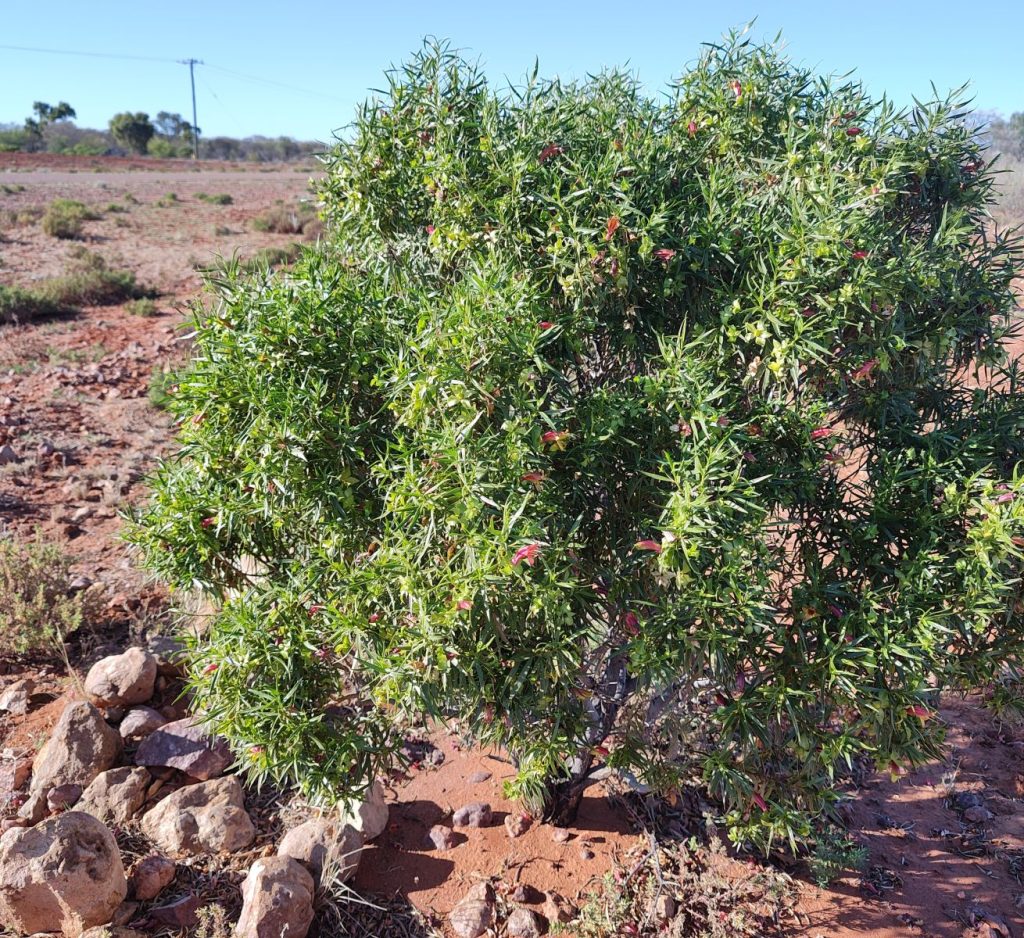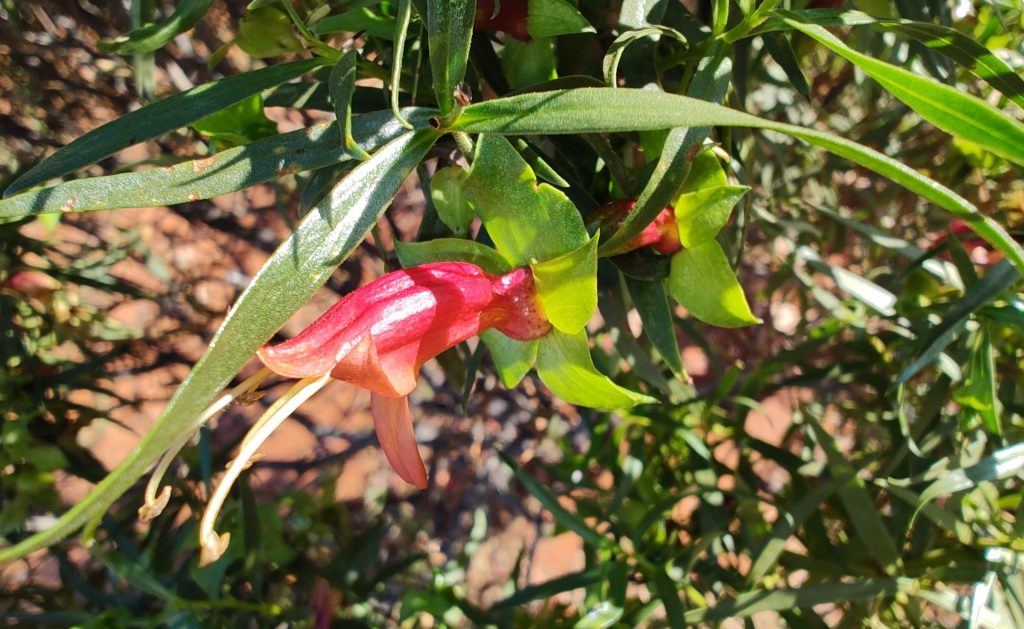This story first appeared in the Eremophila Study Group Newsletter, August 2023.
Article and images by Dr Lyndal Thorburn BSc (Hons), Grad Dip Legal Studies, Grad Dip Ed, Dip Accounting PhD FAICD
I had an inquiry from someone in APS NSW who wanted to know the purpose of the resin on Eremophila.
I looked up Chinnock and, though he talks about the resin, he doesn’t speculate as to its purpose. However, he did refer to the work of several chemists who have analysed its composition.
The resins on those species where it is obvious, is made of terpenes and fatty acids.[1] The terpenes are toxic, and also occur in the leaves of some species which are not particularly resinous e.g. E. maculata. There have been many reports of cattle being poisoned after eating Eremophila (see June 2023 NL for a recent example), and, where the Eremophila have been analysed, the terpenes seem to be reported as quite high in concentration.
Hence, perhaps the terpenes and the resins are there to repel chewing insects (or browsing organisms including cattle)?
On our recent trip we found stands of E. duttonii (below), looking shiny and magnificent as they had been untouched by cattle (which were loose on the road and could easily reach them).

In contrast, E. maculata at other sites had been browsed (probably by goats – maybe goats are impervious).
Another view I found online is that the resin’s purpose is to reduce transpiration and enhance drought-resistance. However, the resins are produced by glandular hairs on the stems and leaves, and Chinnock notes that these then get stuck in the resin itself – making the stems and leaves look glossy.

I would have thought that if the resin’s purpose was to resist drying, then they would not want to jam up the hairs, which in many Australian plants (including non-resinous Eremophila) are also thought to reduce the drying effects of wind.
Having said that, one WA academic has indeed postulated that the purpose of the resin is to resist water loss, but not by reducing wind effects.[2] He suggests that the resins reflect light and hence reduces the amount of heat reaching the leaf. In that case the toxin argument is secondary (though perhaps also useful).
[1] Gericke, O. et al (2020): Nerylneryl diphosphate is the precursor of serrulatane, viscidane and cembrane‐type diterpenoids in Eremophila species. BMC Plant Biology,20, 91.
[2] Bell, D (1977): Distribution and Function of Resin and Glandular Hairs in West Australian plants. Jnl of the Royal Society of Western Australia 59(4): 119-123

About the Eremophila Study Group
All members of state based native plants societies can join the Australian Native Plants Society Australia Study Groups. Information on the study groups can be found here: https://anpsa.org.au/anpsa-study-groups/. Each study group has a leader, with active members who participate in research, and those who enjoy receiving up to date information via newsletters.
Information about the Eremophila Study Group can be found here: https://anpsa.org.au/study_group/eremophila-study-group/
The site contains a great deal information – newsletters, plant profiles and images.
